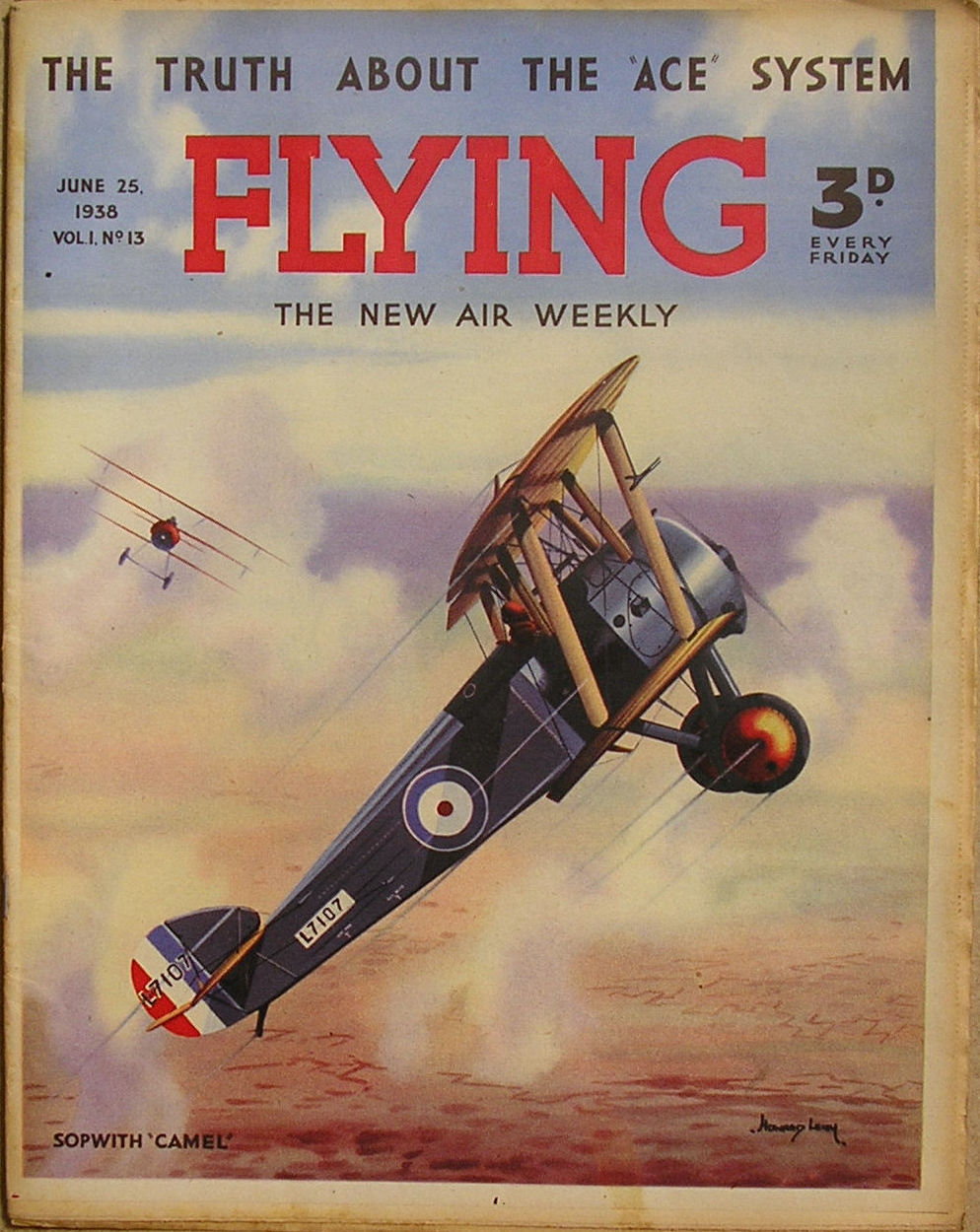Heroes of the Air: Major W.G. Barker
WHEN Flying, the new  weekly paper of all things aviation, started up in England in 1938, amongst the articles and stories and photo features was an illustrative feature called “Heroes of the Air.” It was a full page illustration by S. Drigin of the events surrounding how the pictured Ace got their Victoria Cross along with a brief explanatory note.
weekly paper of all things aviation, started up in England in 1938, amongst the articles and stories and photo features was an illustrative feature called “Heroes of the Air.” It was a full page illustration by S. Drigin of the events surrounding how the pictured Ace got their Victoria Cross along with a brief explanatory note.
Russian born Serge Drigin became a successful illustrator in the UK in the 1920s with his work regularly appearing in such British magazines as The Detective Magazine, Modern Boy and Chums. He is probably best known for his startling covers for Scoops, Air Stories, War Stories, Fantasy and others in the 30s.
From the 25 June 1938 issue of Flying:
MAJOR W.G. BARKER WINNING THE V.C. OVER THE GERMAN LINES, OCT. 27, 1918
Major W.G. Barker, V.C., D.S.O., M.C., a Canadian officer, was awarded the V.C. for what must have been one of the most courageous air battles of the war. He should have gone home on leave on October 26, 1918, but he stayed for one more day’s flying and took off for England on the 27th. High above the German lines he spotted an enemy two-seater, the pilot apparently thinking himself quite safe. Barker, however, was flying a Sopwith Snipe, one of the most efficient machines in France. Within a few moments he had climbed up to his adversary and had sent him spinning down to earth. A Fokker Triplane, having seen this, came to avenge his countrymen, and close behind him came over fifty more German machines. With bullets converging on him from all sides, Barker fought in a fury. Several times he was hit, but still he fought on. In all, he sent four of his attackers to the ground before he himself was brought down, unconscious, just behind the British lines. He had 52 victories to his credit at the time. In hospital he mended slowly and at last he was able to fly again, only to lose his life in 1930, when a new machine he was testing crashed, killing him instantly.





